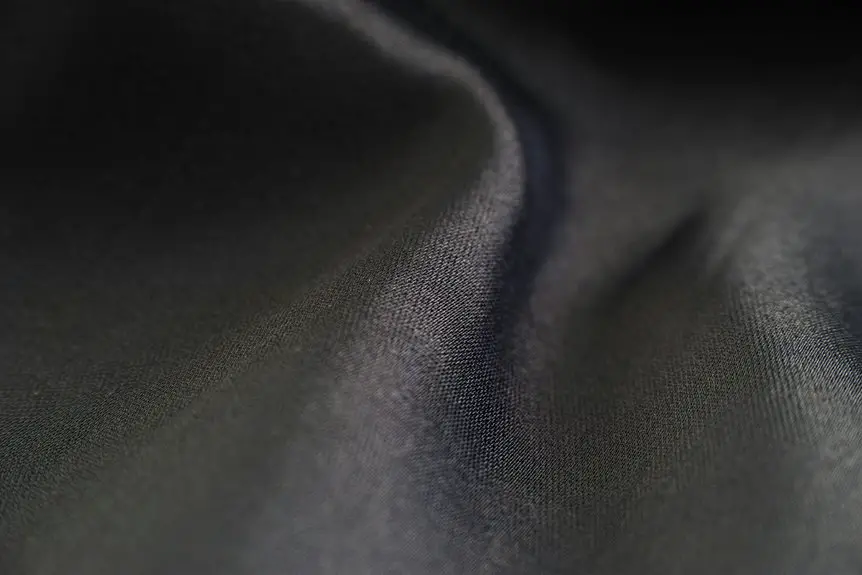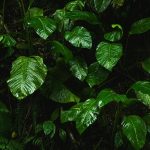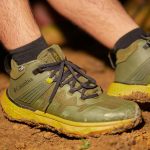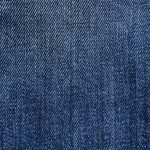Gore-Tex fabric uses expanded polytetrafluoroethylene (ePTFE), a microporous membrane, to keep you dry and comfortable. Its tiny pores are small enough to block liquid water but large enough to let sweat vapor escape, ensuring waterproofing and breathability. This membrane is sandwiched between durable outer fabric and a soft inner lining for protection and comfort. If you want to understand how this clever layering and science work together, there’s even more fascinating detail ahead.
Table of Contents
Key Takeaways
- Gore-Tex fabric features a membrane made from expanded polytetrafluoroethylene (ePTFE), a microporous material developed in 1969.
- The ePTFE membrane contains billions of microscopic pores that block liquid water but allow water vapor to pass through.
- This membrane is laminated between a durable outer fabric and a comfortable inner lining to ensure waterproofness and breathability.
- The microporous structure consists of nodes and fibrils that provide flexibility, durability, and resistance to water and oils.
- Gore-Tex fabric’s waterproof and breathable properties come from the unique size and chemical composition of the ePTFE membrane pores.
The Origin of Gore-Tex Technology
The origin of Gore-Tex technology lies in the innovative work of Robert W. Gore, who, in 1969, discovered a way to stretch polytetrafluoroethylene (PTFE) into a porous, breathable material.
Robert W. Gore’s 1969 breakthrough created porous PTFE, the foundation of breathable Gore-Tex fabric.
You can think of this as turning a solid substance into a network of microscopic pores, which allows vapor to escape while blocking liquid water.
This breakthrough came from experimenting with PTFE’s unique properties, transforming it into a membrane that could revolutionize outdoor wear.
When you wear Gore-Tex, you benefit from this original invention—it keeps rain out but lets sweat evaporate, helping you stay dry and comfortable.
Understanding this beginning helps you appreciate how Gore-Tex became a game-changer in weather-resistant fabrics, directly stemming from Robert Gore’s creative leap.
The Role of Expanded Polytetrafluoroethylene (ePTFE)
You’ll find that expanded polytetrafluoroethylene (ePTFE) plays an essential role in Gore-Tex’s performance.
Its unique microporous structure blocks water droplets while allowing moisture vapor to escape.
This combination keeps you dry and comfortable, balancing waterproofing with breathability.
Structure of Eptfe
Although it might seem complex at first, understanding the structure of expanded polytetrafluoroethylene (ePTFE) is key to grasping how Gore-Tex fabric works.
ePTFE consists of an intricate network of microscopic nodes connected by fibrils, creating a porous yet durable matrix. When you look closely, you’ll see these tiny pores are small enough to block liquid water but large enough to allow air and moisture vapor to pass through.
This unique structure gives the fabric its breathability without sacrificing strength. The fibrils provide mechanical support, preventing the membrane from collapsing under pressure or stretching excessively.
Waterproofing Mechanism
Because ePTFE’s microscopic pores are precisely sized, they play an essential role in Gore-Tex’s waterproofing ability.
These pores are about 20,000 times smaller than a water droplet but large enough to let water vapor pass through. This means when rain hits your Gore-Tex jacket, the water can’t penetrate the fabric because the droplets are too big to pass through the tiny pores.
At the same time, the ePTFE membrane acts as a barrier against external moisture, keeping you dry even in heavy downpours. So, you get reliable protection without sacrificing comfort.
The unique structure of ePTFE guarantees that liquid water stays out, while still maintaining the integrity of the fabric under various weather conditions. This is the core of Gore-Tex’s waterproofing magic.
Breathability Features
When you wear Gore-Tex, the fabric doesn’t just keep water out; it also lets sweat escape, thanks to the breathability of expanded polytetrafluoroethylene (ePTFE).
This material has microscopic pores smaller than a water droplet but larger than a water vapor molecule. That means water stays outside, but moisture from your body can pass through, keeping you dry and comfortable.
You’ll notice how this breathability helps regulate temperature and prevents clamminess during intense activity.
Imagine:
- Tiny pores acting like one-way doors
- Sweat vapor escaping your jacket like steam
- Rain droplets beading on the surface without seeping in
- Cool air circulating close to your skin
- Staying dry even when you’re moving hard
ePTFE’s structure makes Gore-Tex perfect for all-weather performance.
Structure and Properties of Eptfe Membranes
You’ll notice that ePTFE membranes have a unique microporous structure that plays an essential role in their performance.
They’re designed to repel water while allowing vapor to pass, balancing hydrophobic and oleophobic traits.
Plus, their mechanical strength guarantees durability in tough conditions.
Microporous Structure Details
Although the microporous structure of ePTFE membranes may seem complex, understanding its unique arrangement is key to grasping how Gore-Tex fabric performs. You’ll find that this structure consists of millions of tiny pores, each smaller than a water droplet but large enough to let water vapor pass through. This selective permeability keeps you dry while allowing sweat to escape.
The membrane’s strength comes from the interconnected nodes and fibrils that form a durable yet flexible network.
Imagine the structure like:
- A microscopic honeycomb with countless tiny cells
- Tiny tunnels allowing vapor to travel through
- Strong fibers linking the pores together
- Pores small enough to block liquid water
- A flexible, breathable mesh that moves with you
This intricate design is what makes Gore-Tex both waterproof and breathable.
Hydrophobic vs. Oleophobic Traits
Because ePTFE membranes rely on their surface properties to manage moisture and contaminants, understanding the difference between hydrophobic and oleophobic traits is crucial.
Hydrophobic means the membrane repels water, preventing liquid moisture from passing through while allowing water vapor to escape. This keeps you dry and comfortable.
Oleophobic, on the other hand, means the membrane resists oils and grease, which are more challenging to repel due to their lower surface tension.
While traditional ePTFE membranes excel at being hydrophobic, manufacturers often treat or modify them to add oleophobic properties. This dual resistance guarantees that oily substances don’t clog the membrane’s pores, maintaining breathability and waterproof performance over time.
Knowing these traits helps you appreciate how Gore-Tex fabrics stay effective in varied, challenging conditions.
Mechanical Strength Characteristics
Understanding how Gore-Tex membranes resist water and oils sets the stage for appreciating their mechanical strength. The ePTFE (expanded polytetrafluoroethylene) membrane’s unique microstructure gives it incredible durability while staying lightweight and flexible.
You’ll find that this structure, made of tiny nodes connected by fibrils, allows the fabric to stretch without tearing, resist abrasions, and maintain its shape under stress. This means your gear stays reliable in tough conditions.
Imagine the membrane as:
- A spiderweb of microscopic fibers
- Tiny nodes acting like strong anchor points
- Stretchy fibrils that absorb impact
- A tough yet lightweight barrier
- A fabric that flexes but doesn’t break
These properties guarantee Gore-Tex lasts, performs, and keeps you protected.
How Gore-Tex Achieves Waterproofing
When you wear Gore-Tex, its unique membrane works by letting moisture escape while blocking water from getting in. This waterproofing happens because the membrane contains billions of microscopic pores, each smaller than a water droplet but larger than water vapor molecules.
These pores physically prevent liquid water from penetrating, so rain and snow stay outside. At the same time, vapor from your sweat can pass through, keeping you dry inside. The membrane’s chemical composition also repels water, enhancing its resistance.
Additionally, Gore-Tex fabric layers are carefully bonded and sealed at seams to prevent leaks. Together, these features guarantee you stay protected from wet conditions without feeling clammy, making Gore-Tex an effective barrier against external moisture.
Breathability Mechanism in Gore-Tex Fabrics
Although staying dry from rain is essential, you’ll also want your gear to let sweat escape so you don’t feel overheated or clammy.
Gore-Tex fabrics achieve breathability through millions of tiny pores in their membrane. These pores are small enough to block water droplets but large enough to allow water vapor (like sweat) to pass through. This means moisture from your body can escape while keeping external water out.
Here’s how the breathability mechanism works in your Gore-Tex gear:
- Sweat vapor rises from your skin.
- Vapor moves into the Gore-Tex membrane’s microscopic pores.
- Pores prevent liquid water from entering.
- Moisture vapor escapes to the outside environment.
- You stay dry, comfortable, and cool during activity.
This balance keeps you protected without overheating.
Laminating Gore-Tex to Outer and Inner Layers
Gore-Tex fabric combines with outer and inner layers through a lamination process that certifies durability and performance.
When you wear Gore-Tex apparel, the membrane isn’t just sitting loosely—it’s bonded tightly between layers. This lamination seals the membrane to a rugged outer fabric that resists abrasion and a comfortable inner lining that touches your skin.
You’ll find that this layered construction keeps the membrane protected while maintaining flexibility. The process uses heat and pressure to fuse these materials without compromising breathability.
Thanks to this technique, the fabric stays lightweight and waterproof, allowing moisture vapor to escape while blocking water from entering.
Durability and Maintenance of Gore-Tex Materials
Because you rely on your gear in tough conditions, understanding how to maintain Gore-Tex materials is vital for preserving their durability.
Gore-Tex fabrics are designed to withstand rough use, but proper care guarantees they stay waterproof and breathable. You’ll want to wash them regularly to remove dirt and oils that clog the membrane. Avoid fabric softeners, which can reduce effectiveness.
After washing, reactivating the durable water repellent (DWR) coating with heat helps maintain water resistance. Store your Gore-Tex gear in a cool, dry place away from direct sunlight.
- Gently brush off mud before washing
- Use mild detergent without additives
- Tumble dry low or iron with a cloth barrier
- Spot clean stains promptly
- Avoid folding tightly for long periods
These steps keep your Gore-Tex performing at its best.
Environmental Considerations in Gore-Tex Production
When you choose waterproof gear, it’s important to contemplate how its production impacts the environment. Gore-Tex fabric relies on expanded polytetrafluoroethylene (ePTFE), a synthetic material derived from petroleum. Manufacturing ePTFE involves energy-intensive processes and chemical treatments that can produce greenhouse gas emissions and waste.
However, Gore has committed to reducing its environmental footprint by improving energy efficiency and minimizing harmful byproducts during production. You should also know that Gore-Tex products are designed for durability, which helps reduce waste by extending gear lifespan.
Additionally, the company encourages recycling programs to keep materials out of landfills. By understanding these factors, you can make more informed choices and support brands aiming for sustainability in waterproof fabric production.
Innovations and Future Developments in Gore-Tex Technology
As outdoor enthusiasts demand lighter, more breathable, and sustainable gear, the makers of Gore-Tex continue pushing the boundaries of fabric technology.
You’ll see innovations focused on enhancing performance while reducing environmental impact. Gore-Tex is evolving with new membrane structures, advanced laminates, and eco-friendly treatments that maintain waterproofing without harmful chemicals.
Future developments aim to blend durability with comfort, keeping you dry and comfortable in all conditions. Imagine gear that adapts to your activity level and weather changes seamlessly.
Gear that seamlessly adapts to your activity and weather, delivering unmatched durability and comfort.
Here’s what you can expect in the future of Gore-Tex:
- Ultralight membranes for less bulk
- Increased breathability with smart ventilation
- Bio-based, sustainable materials
- Enhanced stretch and flexibility
- Durable water repellents free from PFAS chemicals
You’ll enjoy gear that works smarter and treads lighter on the planet.
Frequently Asked Questions
Can Gore-Tex Fabric Be Recycled or Reused?
You can recycle or reuse Gore-Tex fabric, but it’s tricky since it combines multiple layers. Some specialized programs accept it for recycling, and you can also repurpose old gear creatively to extend its life and reduce waste.
How Does Gore-Tex Compare to Other Waterproof Fabrics?
You’ll find Gore-Tex outperforms many waterproof fabrics by offering superior breathability and durability. It keeps you dry without trapping sweat, unlike some alternatives that sacrifice comfort for waterproofing or wear out faster.
Is Gore-Tex Safe for Sensitive Skin?
Worried Gore-Tex will start a skin rebellion? Relax! It’s usually safe for sensitive skin since it’s breathable and hypoallergenic. Just don’t wear it if you’re allergic to synthetic fabrics—then you’re in for a drama.
What Clothing Brands Use Gore-Tex Technology?
You’ll find Gore-Tex technology in brands like The North Face, Arc’teryx, Patagonia, and Columbia. They use it to make waterproof, breathable gear that keeps you dry and comfortable during outdoor adventures.
How Should Gore-Tex Garments Be Properly Stored?
Think of Gore-Tex like a delicate watch—store it in a cool, dry place, away from direct sunlight. You shouldn’t stuff it in a damp bag; instead, hang it loosely to keep its breathability intact.
- The Use of Nonwovens in Construction and Civil Engineering - July 11, 2025
- The Use of Nonwovens in Construction and Civil Engineering - July 11, 2025
- The Use of Nonwovens in Construction and Civil Engineering - July 11, 2025







